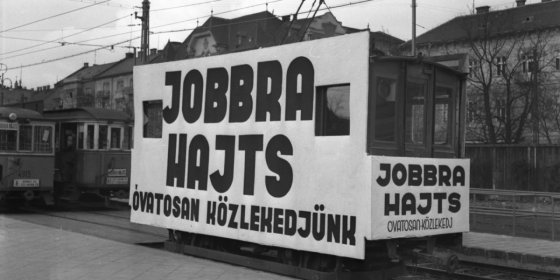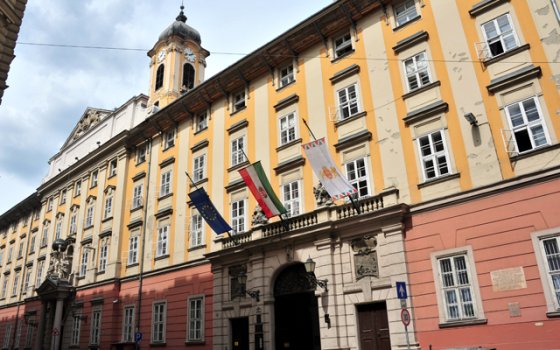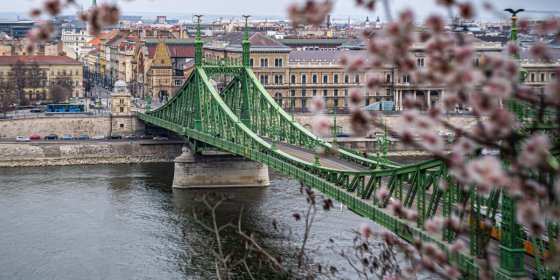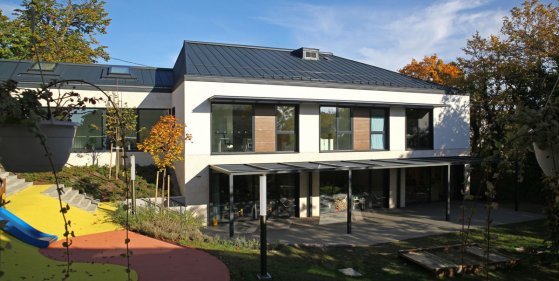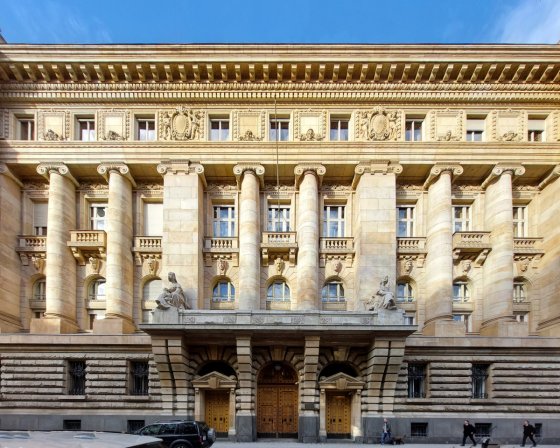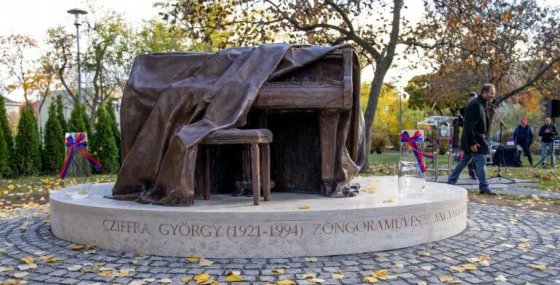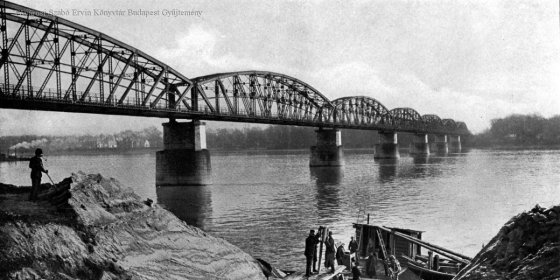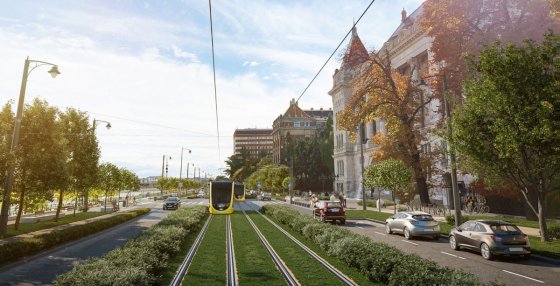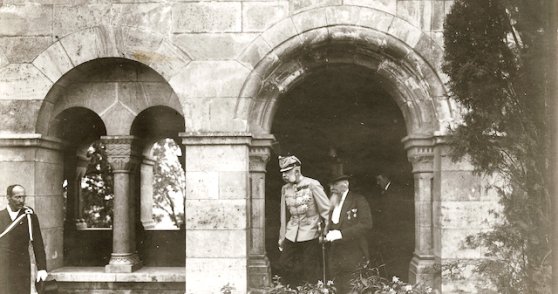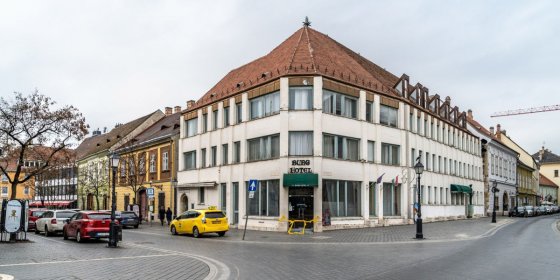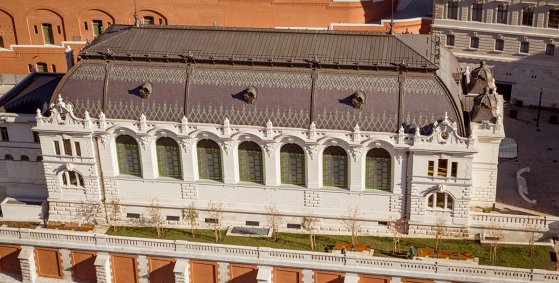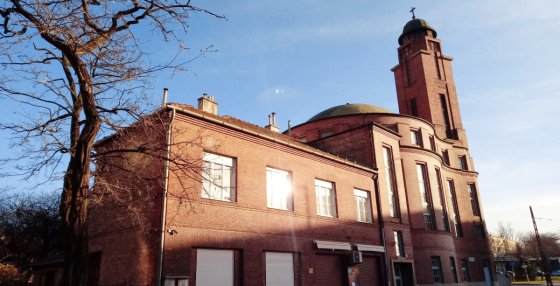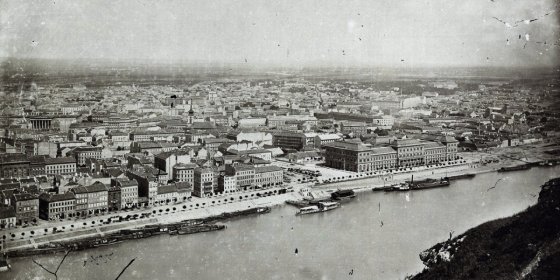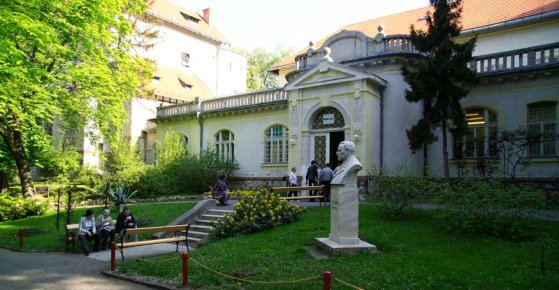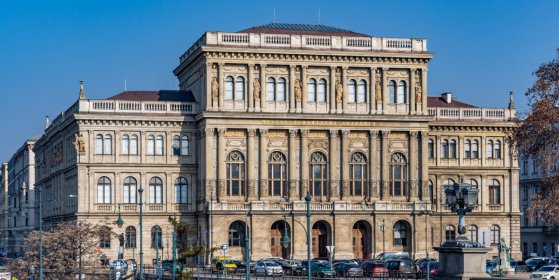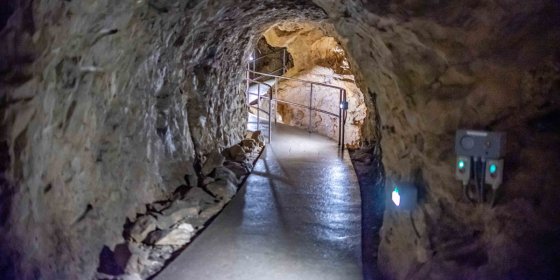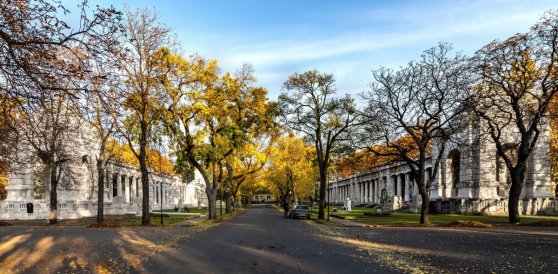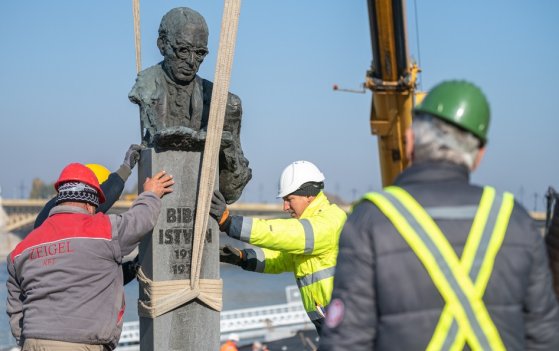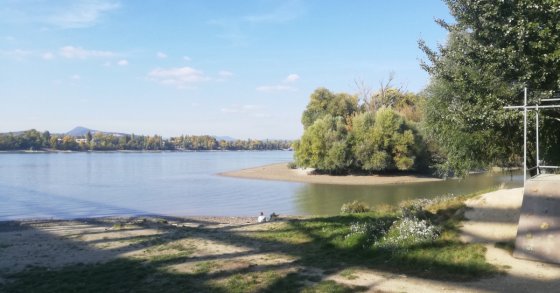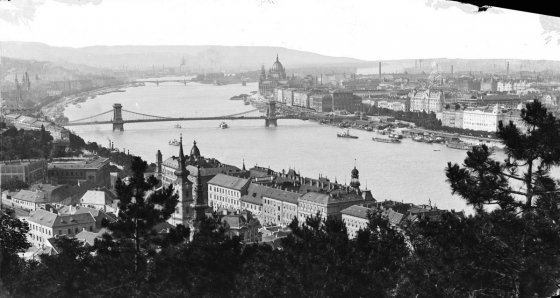 The „intertwined history” of the bridges and the city of Budapest
Which ideas and events have shaped the fate of bridges of Budapest and the cityscape? Alongside many other interesting facts, this question is also answered this newly published book by the Budapest City Archives, which introduces the history of bridges in Budapest.
The „intertwined history” of the bridges and the city of Budapest
Which ideas and events have shaped the fate of bridges of Budapest and the cityscape? Alongside many other interesting facts, this question is also answered this newly published book by the Budapest City Archives, which introduces the history of bridges in Budapest.
PestBuda
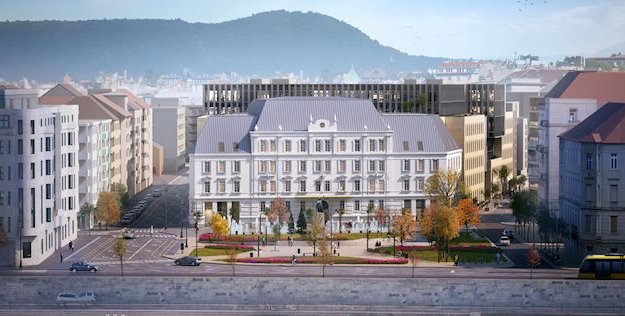 2024-ben nyílik meg a hotel a Radetzky-laktanya helyén
2024-ben nyílik meg a hotel a Radetzky-laktanya helyén
November 10, 2021 at 2:00 PM
A Bem téren az egykori Radetzky-laktanya területén 127 szobás hotel nyílik, várhatóan 2024-ben. A történelmi jelentőségű XIX. századi épületet tavaly majdnem teljes egészében lebontották, csak a térre néző főhomlokzat maradt meg.
80 éve vezették be a jobb oldali közlekedést Magyarországon
November 10, 2021 at 9:00 AM
A világ nagy részén manapság az autók az út jobb oldalán haladnak, az európai szárazföldön is ez a közlekedési rend van érvényben, bárhová is megyünk. Ez azonban nem mindig volt így: a jobbra hajtás Magyarországon csak 80 éve, 1941 novemberében lett általános, az európai kontinens országai közül az egyik utolsóként. Több járat azonban még ezután is az eredeti rend szerint közlekedett, a Kisföldalattin csak 1973-ban történt meg a váltás.
Right-hand traffic was introduced in Hungary 80 years ago
November 10, 2021 at 9:00 AM
In much of the world today, cars are on the right side of the road, and on the European mainland, this is the traffic regulation, wherever we go. However, this was not always the case: the right-hand drive in Hungary only became common 80 years ago, in November 1941, as one of the last countries on the European continent. However, several transport vehicle still operated according to the original order, the change in the Kisföldalatti [the small underground railway] only took place in 1973.
Hétezer éves falu nyomaira bukkantak a XI. kerületben
November 9, 2021 at 2:30 PM
Egy hétezer évvel ezelőtti település maradványait tárták fel a régészek a XI. kerületi a Madárhegyen. A gödrökben főként a kőkori emberek által hátrahagyott cserépedények töredékei és állatcsontok kerültek elő.
Traces of a seven-thousand-year-old village were found in the 11th district
November 9, 2021 at 2:30 PM
Archaeologists excavated the remains of a seven thousand years old settlement in the 11th district on Madárhegy. Fragments of mainly pottery and animal bones left behind by Stone Age people were found in the pits.
A soha el nem készült épület – 5 érdekesség a pesti Városházáról
November 9, 2021 at 10:00 AM
Az eredetileg sérült katonák ellátására épült, ám örökké befejezetlenül maradt Városház utca 9–11. szám alatti épület 300 éves története bőven tartogat izgalmas epizódokat: a mai Központi Városháza nemcsak az 1848-as forradalomban játszott szerepet, de több jelentős személyiség is született a falai között, és még egy vándorló Pallas Athéné-szobornak is otthont adott.
Aki nélkül a Szabadság híd sem lenne ugyanaz: száz éve halt meg Nagy Virgil, a fém építőmestere
November 8, 2021 at 6:30 PM
100 éve hunyt el Nagy Virgil, aki Budapest látképét alapjaiban meghatározó szerkezeteket tervezett, neki köszönhetjük a Szabadság híd építészeti kialakítását és az 1945-ben felrobbantott régi Erzsébet híd esztétikai megjelenését is.
Without whom the Liberty Bridge would not be the same: Virgil Nagy, the master builder of metal, died a hundred years ago
November 8, 2021 at 6:30 PM
Virgil Nagy, who designed the structures that fundamentally define the view of Budapest, passed away 100 years ago, the architectural design of the Liberty Bridge and the aesthetic appearance of the old Elizabeth Bridg , which was blown up in 1945, are his works.
Tervpályázatot hirdetnek a Városháza park megújítására
November 8, 2021 at 4:00 PM
Az elképzelések szerint a jelenleg parkolónak használt területet parkká alakítják és megnyitják a budapestiek előtt. A Városháza park megújítása 2023-ban kezdődhet meg, ezzel együtt tervben van a Városháza hátsó, a Károly körút felé néző homlokzatának felújítása is.
A design tender is being announced for the renewal of the Town Hall Park
November 8, 2021 at 4:00 PM
According to the plans, the area currently used for parking will be transformed into a park and opened to the people of Budapest. The renovation of the Town Hall Park may start in 2023, but it is also planned to renovate the rear facade of the Town Hall facing Károly Boulevard.
Felszentelték a Svábhegyen épült új katolikus óvodát
November 8, 2021 at 2:00 PM
Szeptemberben nyitotta meg kapuit a Pannonia Sacra Katolikus Óvoda a XII. kerületben, a Diana úton épült fel a kétszintes modern épület.
A new Catholic kindergarten was consecrated on Svábhegy
November 8, 2021 at 2:00 PM
The Pannonia Sacra Catholic Kindergarten opened its doors in September in the 12th district, the two-storey modern building was built on Diana Road.
Megújul a Szabadság tér éke – A Magyar Nemzeti Bank visszakapja eredeti fényét
November 8, 2021 at 9:00 AM
A Magyar Nemzeti Bank 1924-ben jött létre, az intézmény jól ismert Szabadság téri épületét valójában még mint az Osztrák–Magyar Bank budapesti székházát adták át 1905-ben. A dualizmus időszakának gazdasági virágzása megjelenik a patinás, Alpár Ignác tervezte épületen is, amit a hamarosan kezdődő rekonstrukció remélhetőleg még inkább előtérbe hoz. A műemléki felújítás során az eredeti állapotokat építik vissza a belső térben, és korszerűsítik, energiatakarékossá teszik az egész épületet.
The wedge of Szabadság Square is renewed - The Hungarian National Bank regains its original splendour
November 8, 2021 at 9:00 AM
The Hungarian National Bank was established in 1924, and the institution's well-known building in Szabadság Square was actually handed over in 1905 as the headquarters of the Austro-Hungarian Bank in Budapest. The economic flourishing of the period of dualism is also reflected in the prestigious building designed by Ignác Alpár, which will hopefully be brought to the fore by the reconstruction that will begin soon. During the renovation of the monument, the original conditions will be restored in the interior and the whole building will be modernised and made energy-efficient.
Szobrot avattak Cziffra György emlékére a XIII. kerületben
November 7, 2021 at 3:00 PM
Cziffra György születésének 100. évfordulóján szobrot avattak a zongoravirtuóz emlékére a róla elnevezett parkban.
A statue was inaugurated in memory of György Cziffra in the 13th district
November 7, 2021 at 3:00 PM
On the 100th anniversary of György Cziffra's birth, a statue was unveiled in memory of the piano virtuoso in the park named after him.
Egy elfeledett vasúti óriáshíd – A millenniumra épült, a háborúban elpusztult
November 7, 2021 at 10:30 AM
Az Újpesti vasúti híd mostohagyerek a budapesti hidak között, hisz még rendes neve sincs. Szinte alig esik róla szó, pedig immár 125 éve közlekednek itt vonatok, és fontos szerepe van a Budapest környéki közlekedésben. Most az első szerkezet születésére emlékezünk, amely 1896-ban a millenniumra épült, de a II. világháborúban elpusztították.
A forgotten enormous railway bridge - Built for the Millennium, destroyed by war
November 7, 2021 at 10:30 AM
The Újpest Railway Bridge is a stepchild among the bridges in Budapest because it does not even have a regular name. There is almost no mention of it, even though trains have been running here for 125 years, and it plays an important role in traffic around Budapest. Pestbuda now remembers the birth of the first structure, which was built in 1896 for the millennium but was destroyed in World War II.
Folytatódik a budai fonódó villamoshálózat új szakaszának tervezése
November 6, 2021 at 6:30 PM
Újabb mérföldkőhöz érkezett a budai fonódó villamos új szakasza, elkészültek a bírálati engedélyezési és a kiviteli tervek. A villamospálya egy része füvesítve lesz, hét új megálló épül.
The planning of a new section of the weaving tram network in Buda continues
November 6, 2021 at 6:30 PM
Another milestone was reached in the new section of the tram, and the evaluation permitting and construction plans were completed. Part of the tramway will be grassed and seven new stops will be built.
Száz éve volt a trónfosztás, de a Habsburg-emlékek velünk maradtak
November 6, 2021 at 2:00 PM
Száz évvel ezelőtt, 1921. november 6-án mondta ki a Nemzetgyűlés a Habsburg-ház trónfosztását. Magyarországon a Habsburgok évszázadokon keresztül uralkodtak. A XVIII. századtól erről többek között Budapest városrészeinek nevei, szobrok, emléktáblák és az ebben a korszakban átadott épületek, hidak mesélnek.
A Magyar Építész Kamara védelem alá helyezné a budavári Szentháromság tér 7-8. szám alatti épületet
November 5, 2021 at 5:00 PM
A budai Várban, a Mátyás-templommal szemben található egykori diplomata lakóház, a későbbi Burg Hotel az 1970-es években épült. A Magyar Építész Kamara javaslata szerint helyi védelem alá kellene helyezni az épületet, így őrizni meg azt az utókor számára.
The Hungarian Chamber of Architects would place 7-8 Szentháromság tér in Budavár under protection
November 5, 2021 at 5:00 PM
In the Buda Castle, the Matthias Church opposite the former diplomatic residence, the later Burg Hotel was built in the 1970s. According to the proposal of the Hungarian Chamber of Architects, the building should be placed under local protection, thus preserving it for posterity.
Nemzetközi díjat nyert a budavári Lovarda tetőszerkezete
November 5, 2021 at 2:00 PM
A nemrég újjászületett budavári Lovarda az eredetivel megegyezően újjáépített vörös és zöld angol palával fedett tetőszerkezete megnyerte a Nemzetközi Tetőfedő Szövetség németországi világbajnokságát. Az épület a kontyolt manzárd-nyeregtetőjével a fémtetők kategóriájában hozta el a legjobbnak járó elismerést.
The roof structure of the Budavár Riding Hall won an international award
November 5, 2021 at 2:00 PM
The recently reborn Riding Hall in Budavár, with its red and green English slate roof structure rebuilt in the same way as the original, won the World Championship of the International Roofing Association in Germany. The building, with its vaulted mansard roof, has earned the recognition in the category of metal roofs.
Kilencvenéves a kőbányai evangélikus templom, az első, modern építészeti elveket mutató budapesti protestáns épület
November 5, 2021 at 11:00 AM
A Kőbányai Evangélikus Egyházközség 1931-ben felszentelt temploma a főváros mértani középpontján található. A Kápolna utca 14. szám alatti épület a két világháború közötti magyar szakrális építészet kis méretű „ékszerdoboza”. Alaprajza az egyhajós centrális elrendezésű, barokk szakrális épületek világát idézi, külső megformálásában az art deco nyugat-európai épületeivel rokonítható.
The Lutheran Church in Kőbánya is ninety years old, the first Protestant building in Budapest showing modern architectural principles
November 5, 2021 at 11:00 AM
The church of the Lutheran Parish of Kőbánya, consecrated in 1931, is located in the geometric center of the capital. The building at 14 Kápolna Street is a small "jewel box" of Hungarian sacred architecture between the two world wars. Its floor plan evokes the world of Baroque sacral buildings with a single nave, and in its external design it can be related to the Western European buildings of art deco.
„Budapest világvárossá emeltessék” – 150 évvel ezelőtt hirdették meg a főváros nagyszabású kiépítését
November 4, 2021 at 10:30 AM
A magyar főváros világvárossá emelése már Pest és Buda egyesítése előtt megfogalmazódott, amikor is 1871-ben pályázatot írtak ki egy olyan szabályozási terv elkészítésére, amely kereteket ad a tervezett nagyszabású építkezéseknek. A 150 évvel ezelőtt zárult pályázatra számtalan olyan javaslat érkezett, amely hozzájárult a főváros jelenleg ismert szerkezetének és városképének kialakításához.
"Budapest should be made a metropolis" - 150 years ago, the large-scale constructions in the capital were announced
November 4, 2021 at 10:30 AM
The transformation of the Hungarian capital into a metropolis was formulated before the unification of Pest and Buda, when in 1871 a tender was issued for the preparation of a regulatory plan that would provide a framework for the planned large-scale constructions. The tender, which closed 150 years ago, received a number of proposals that contributed to the development of the currently known structure and cityscape of the capital.
Ötszáz fát ültetnek a Hegyvidéken a Korányi kórház felújításakor kivágandó fák helyett
November 3, 2021 at 8:00 PM
A XII. kerületi Országos Korányi Pulmonológiai Intézet felújításakor kivágandó fák helyén újakat telepítenek. Az intézmény 200 fát helyben pótol, 300 fát pedig a kerület különböző közterületein ültetnek el.
Five hundred trees are planted in the Highlands instead of trees to be cut down during the renovation of Korányi Hospital
November 3, 2021 at 8:00 PM
During the renovation of the National Korányi Pulmonology Institute of the 12th district, new trees will be planted in place of the trees to be felled. The institution replaces 200 trees locally and 300 trees are planted in various public areas of the district.
Nyolc építész és sokféle elképzelés – 1861-ben kezdték el tervezni a Tudományos Akadémia épületét
November 3, 2021 at 10:00 AM
November 3-án ünnepeljük a magyar tudomány napját, arra emlékezve, hogy 1825-ben a pozsonyi országgyűlésen ezen a napon ajánlotta fel egyévi jövedelmét gróf Széchenyi István a Tudományos Akadémia létrehozására. 1861-ben nyolc hazai és külföldi építész adott be pályaművet az Akadémia épületére. A tervekből kiderül: eltérően képzelték el a tudomány palotájának városképi megjelenését. Sőt, a stílusról is élénk vita bontakozott ki.
Ahol a nagy mesemondó alussza örök álmát – Jókai Mór síremléke
November 2, 2021 at 9:00 AM
Halottak napján szeretteinkre emlékezünk, felkeressük sírjaikat, koszorút viszünk, mécsest gyújtunk. Ez az ünnep lehetőséget biztosít ugyanakkor, hogy nemzetünk nagyjaira is emlékezzünk. Jókai Mór egyértelműen közéjük tartozik, megérdemli tehát a figyelmet, annál inkább, mert a nagy mesemondó síremlékének is regényes története van.
Csoda Buda alatt – Harmincöt éve látogatható a Szemlő-hegyi-barlang
November 1, 2021 at 2:00 PM
A Szemlő-hegyi-barlangot ugyan már több mint 90 éve felfedezték, de csak 35 éve látogatható. Ez a főváros egyik legszebb és legérdekesebb föld alatti látványossága, ami nagyon nagy elismerés, hiszen Budapest alatt barlangkülönlegességek sora található.
Miracle under Buda - The Szemlő-hegyi Cave can be visited for 35 years
November 1, 2021 at 2:00 PM
Although the Szemlő-hegyi Cave has been discovered for more than 90 years, it has only been open to the public for 35 years. This is one of the most beautiful and interesting underground attractions in the capital, which is a great recognition, as there are several cave specialities below Budapest.
Hol sírjaik domborulnak – Építészek a Nemzeti Sírkertben
October 31, 2021 at 9:00 AM
A Fiumei Úti Nemzeti Sírkertben hazánk legjelesebb alakjai alusszák örök álmukat. Köztük számos építész is található, hiszen munkásságukkal tevékenyen hozzájárultak az ország fejlődéséhez, köztiszteletben álló személyek voltak. Halottak napjának közeledtével kilátogattunk a temetőbe, hogy megnézzük síremlékeiket, amelyek maguk is valódi műalkotások.
Visszahelyezték a pesti felső rakpartra Bibó István szobrát
October 30, 2021 at 2:00 PM
Daruval emelték vissza a helyére, a Széchenyi rakpartra Bibó István bronz mellszobrát, amelyet az idősebb Antall József rakpart jelenleg is zajló felújítási munkái miatt mozdítottak el.
The statue of István Bibó was put back on the upper embankment of Pest
October 30, 2021 at 2:00 PM
The bronze bust of István Bibó was lifted back to its place on the Széchenyi embankment by crane, which was moved due to the ongoing renovation works of the older József Antall embankement.
Ahová egykor olimpiát is álmodtak – A Népszigeten megállt az idő
October 30, 2021 at 9:00 AM
Van egy hely Budapesten, amely majdnem világhírnevet szerzett magának. Végül azonban nem lett világhírű, sőt még rendes, becsületes névvel sem rendelkezik valójában. Mostani cikkünkben a súlyos elhanyagoltságában, kihasználatlanságában is szép Népszigetet járjuk be.
Where they once dreamed of an Olympics - Time stopped on Népsziget
October 30, 2021 at 9:00 AM
There is a place in Budapest that has almost gained world fame. In the end, however, it did not become world-famous, in fact, it does not even have a regular, honest name. In our current article, we will visit Népsziget [People's Island], which is beautiful even in its severe neglect and underutilization.
More articles
 The „intertwined history” of the bridges and the city of Budapest
Which ideas and events have shaped the fate of bridges of Budapest and the cityscape? Alongside many other interesting facts, this question is also answered this newly published book by the Budapest City Archives, which introduces the history of bridges in Budapest.
The „intertwined history” of the bridges and the city of Budapest
Which ideas and events have shaped the fate of bridges of Budapest and the cityscape? Alongside many other interesting facts, this question is also answered this newly published book by the Budapest City Archives, which introduces the history of bridges in Budapest.
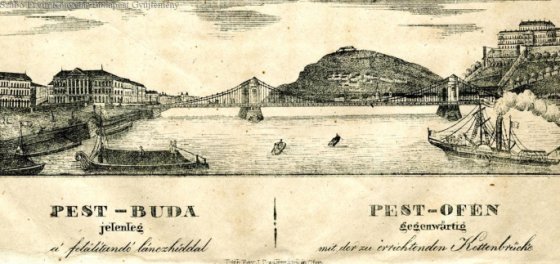 The Bridge Report, which brought a turning point in the history of Budapest
A travel report that changed the history of Pest and Buda, as well as Hungary. The little book contributed to the change of half a thousand years of legal customs and the implementation of an investment of unprecedented size and technical quality. This book was The Bridge Report [Hídjelentés in Hungarian].
The Bridge Report, which brought a turning point in the history of Budapest
A travel report that changed the history of Pest and Buda, as well as Hungary. The little book contributed to the change of half a thousand years of legal customs and the implementation of an investment of unprecedented size and technical quality. This book was The Bridge Report [Hídjelentés in Hungarian].
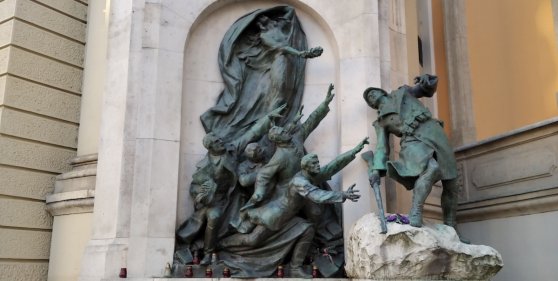 Drama on the university wall - The heroic monument was planned 95 years ago
In the constant hustle and bustle of the Egyetem Square in Pest, the students may not even notice the monument that decorates the short section of wall between the church and the central building of ELTE. However, it commemorates their predecessors, the heroes who fought for their country in World War I, and those who heroically helped them. The first design of the dramatically collapsing soldier was born in 1928, ninety-five years ago.
Drama on the university wall - The heroic monument was planned 95 years ago
In the constant hustle and bustle of the Egyetem Square in Pest, the students may not even notice the monument that decorates the short section of wall between the church and the central building of ELTE. However, it commemorates their predecessors, the heroes who fought for their country in World War I, and those who heroically helped them. The first design of the dramatically collapsing soldier was born in 1928, ninety-five years ago.

